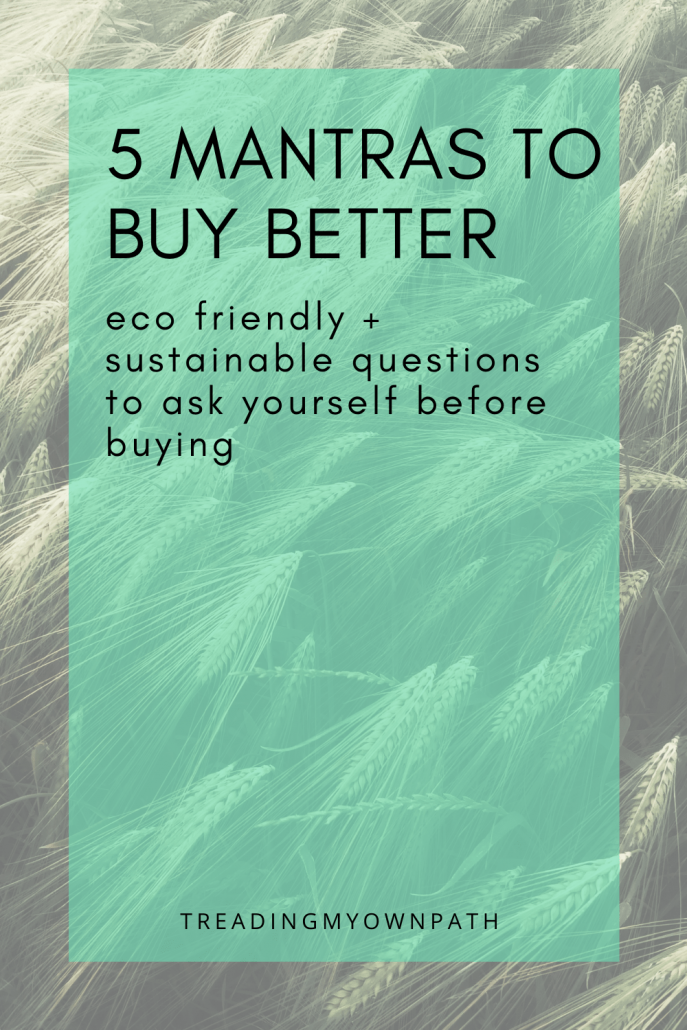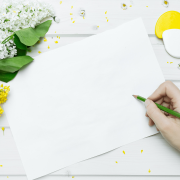5 Mantras for Buying Better
Nobody intends to buy things and not use them, but of course – it happens. We buy clothes that we end up never wearing, we buy tools or gadgets we end up never using, we buy games we end up never playing… and the list goes on.
I, for one, was particularly guilty of buying clothes that I never wore. There were a myriad of reasons for this. I had a tendency to buy things ever slightly on too-small side (wishful thinking on my part), I’d buy things that suited the model on the billboard but not me, I’d buy things that looked nice (on the hanger) but just weren’t practical for wearing to do the kinds of things I actually do.
Oh, and of course I’d totally confuse the “bargain price” as a reason to buy things, without giving much thought to whether they were useful or practical – I was too focused on the “money saved”.
Oh the irony, when I could have saved 100% of my money and bought nothing at all.
This pursuit of bargains started out as sales shopping from regular stores, but when I first started buying things second-hand I noticed another huge spike in my shopping – there was a whole new category of “bargain” to be discovered!
When I began my journey to less stuff back in 2013, I started to notice these patterns in my habits when it came to buying things I then didn’t use. I decluttered slowly, and began appreciating my new-found freedom from yet-another-weekend-of-endless-sorting.
I knew I had to protect this space from a new influx of clutter.
Decluttering is hard work. There was no way I wanted to go through that again! This had to be a one-time journey for me.
I’ve put in place a framework (or call them ‘rules’, if you like!) around how to make better buying decisions. The goal is that I only buy things that I truly need and will use often.
I don’t want to spend my money on stuff I never use that I then feel guilty about and have to tidy up and maintain and look after. No thank you.
Of course I’m not perfect and stuff occasionally slips through the gaps, but having a structure in place really helps with making better choices.

1. Do I Need It?
You’d think this would be obvious. But often we say we need things, meaning – I have to have that! – rather than – I actually need this. If you’ve ever seen a pair of shoes or a handbag or a new gadget or [insert shiny new thing here] and said “ohhhhmygoodness I need this!” then you know exactly what I mean.
We don’t need the thing, but we’re enthralled by it, we love the design or the style or the ingenuity of it, and so we want to buy it.
But often things we ‘need’ (as opposed to things we need) don’t actually get used, or they don’t get used often enough to justify us buying them.
So the first question to ask is honestly, do I need it?
2. Will I Use It (Often)?
We can justify our needs by telling ourselves we will use the item. And maybe we will. But how much? And ultimately, is that worth the price?
One of my favourite rules around this is the idea of ’30 wears’. Meaning, when I buy an item of clothing, do I know that I will wear it 30 times?
This means that for me, items like underpants, jumpers, and comfy jeans get a big tick. And items like fancy dresses purchased for a wedding, formal wear and high heels get a no.
If I can’t see myself going to 30 weddings or 30 formal dinners in the near future, I can’t justify buying the item. I can make do with what I have, borrow from a friend, or maybe hire something.
So when I’m thinking about buying something, I ask myself what would be a realistic amount of use for that item, and whether I would use it that much.
If I need something once, for a specific task, then I try to borrow it instead. I don’t need to own every single thing I might use once. That can amount to an awful lot of (barely used) stuff.
If I need something short-term, then I try to buy second-hand and commit to passing it on to someone else or back to the charity shop when its useful time with me has come to an end.
3. Is It Made to Last (and is it fit for purpose)?
I am sure I’m not the only one who finds it super annoying when stuff breaks. Rather than wait for something to break only to find out that the item is non-repairable and the manufacturer would rather sell me a whole new one, I now think about this before I buy stuff.
So I think about what it’s made of, how it’s made, whether there are any breakable parts, whether it’s possible to buy spare parts should something break, and how easy it would be to fix.
With tech, I try to buy the most up-to-date version I can to make sure it lasts, whilst steering clear of anything that seems like a fad (as someone who had a minidisc player and a VHS collection, I’m well aware that technology gets superceded).
Coming back to clothes, for example, I try to steer clear of anything that is definitely dry clean only (I’m not going to get it dry cleaned – I can’t bear the thought of all those chemicals), I avoid excessive embellishments such as sequins (they’ll detach quickly making the garment look old, and I know I’m not going to sew them on again) or anything that I know won’t make it through 30 cycles of a washing machine.
4. Wait 30 Days
So far, so practical – but there’s definitely a place in life for beautiful things, things that we ‘need’ because they bring us joy, or allow us to support an artist whose work we love, or because life is allowed to be fun too.
(I’m not a total stick-in-the-mud, honestly!)
The issue is that there are so many beautiful things, that if we buy them unchecked we end up with a house full of things that are no longer beautiful and fun so much as mess-inducing and overwhelming.
To help me navigate this, I have a rule that I let wants brew for 30 days. If I see something I ‘need’, I leave it for 30 days and then I come back and make a decision.
I don’t make a note, because I think that if I can’t remember after 30 days, I really couldn’t have ‘needed’ it in the first place.
The things that really have a place in my heart, I remember.
And if I come back in 30 days, and the thing has gone, I consider that it just wasn’t meant to be. No doubt there will be something just as lovely – no, probably even more lovely – just around the corner.
5.What Will Happen to It Afterwards?
I don’t like putting things in the bin. You’ve probably noticed. So a big consideration for me is what will happen to this item either at the end of its life, or when I no longer need it any more.
Certain brands, products and materials have a great second-hand market. Take Lego – you’ll rarely see that in the charity shops, and there are sets that are decades old selling for a good price on online classifieds.
Some stuff keeps its value.
So I try to choose products and brands that are made to last and that someone else might want. Whilst I buy things intending to use them forever, it doesn’t always pan out that way. At least I know someone else will want what I have.
For those things that get used until very my life expired? Some materials can be repurposed, reused or recycled. Others can’t. Natural fibres can be composted. Polyester is plastic.
Mixed materials are difficult to separate and that makes it harder to reuse those resources.
I try to give these factors consideration when I bring things into my home, and choose the most recycable or compostable materials.
We can’t predict the future, but we can make best guesses about whether we need stuff and will use it, and we can consider the intended lifespan of this stuff, and how we will let go afterwards.
Life doesn’t always go as planned, but when we choose to buy things, we can do our best to make sure the odds are in our favour. It’s not just about hoping the purchases we make are good ones, it’s about knowing our personal weaknesses, and having a framework to make better choices.
Now I’d love to hear from you! Do you have any rules when making purchases to ensure the stuff you buy gets put to good use and doesn’t end up being a waste of money? How do you decide whether to purchase or not? What things do you get particularly stuck on? Any other helpful tips? Please share in the comments below!




